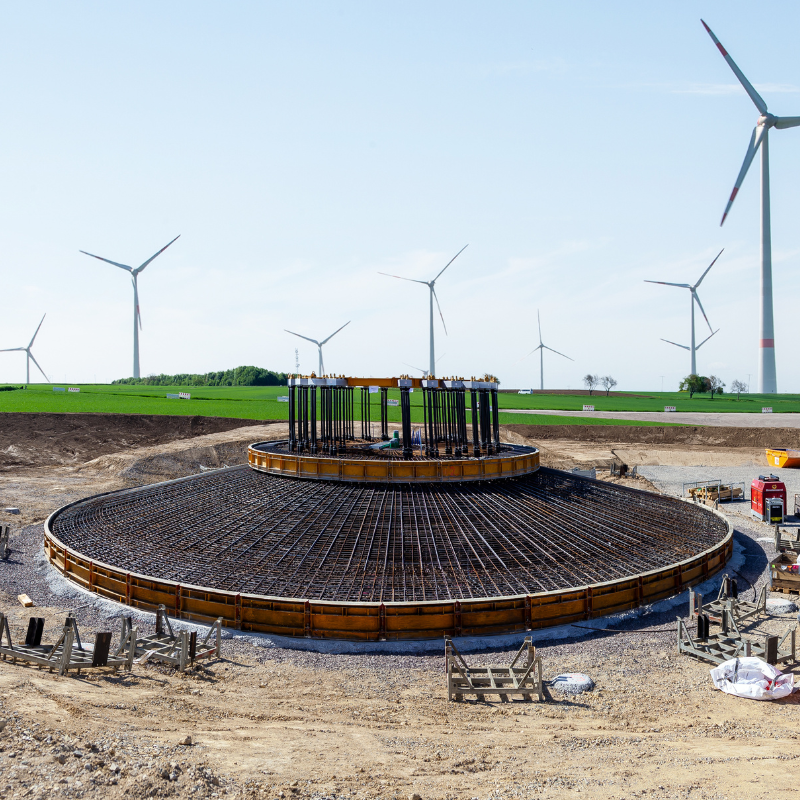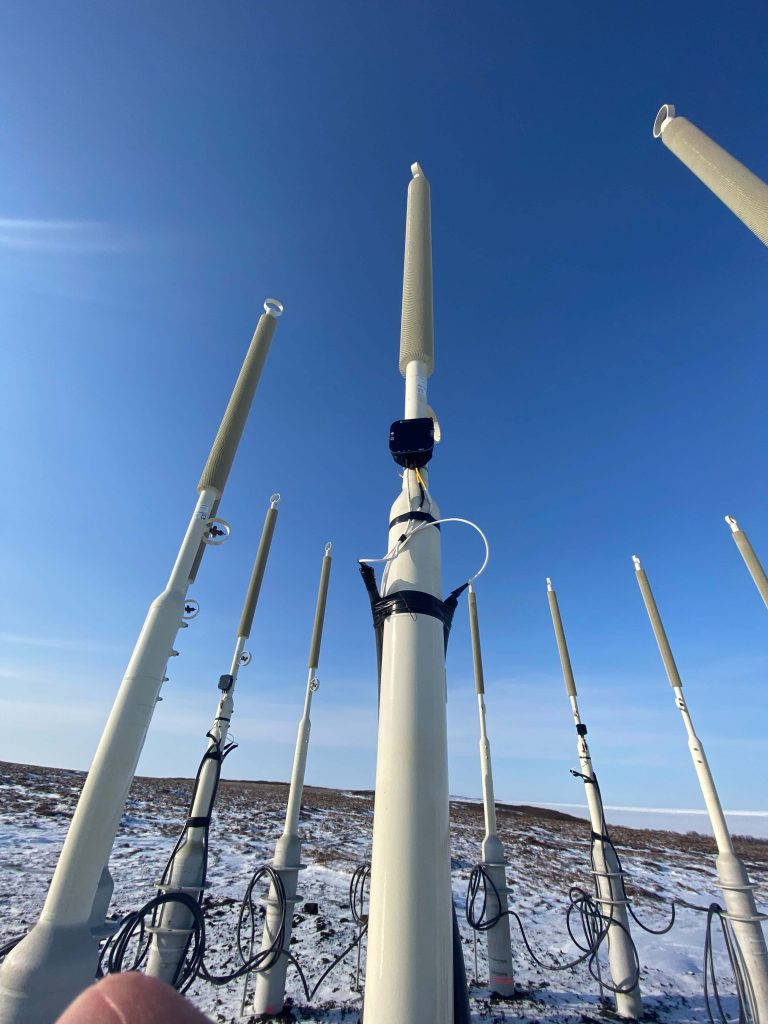As the global demand for renewable energy continues to surge, wind power stands out as a pivotal contributor to sustainable solutions. However, the installation and maintenance of wind turbines in polar climates, characterized as land underlain by permafrost, present distinct challenges that demand innovative solutions. The stability of wind turbine foundations in permafrost regions is intricately tied to temperature fluctuations and ground stability, necessitating a proactive approach to monitoring. This article delves into the significance of temperature monitoring solutions in navigating these challenges, offering insights into their role in optimizing wind turbine foundation performance in the face of environmental complexities.
Understanding the Challenges of Foundations on Permafrost
Navigating the challenges of permafrost in wind turbine installations involves addressing the unique characteristics of this frozen terrain. Permafrost, rich in ice content, becomes susceptible to ground instability when exposed to vibrations from turbine operation or due to thaw of the ice due to climate change, posing a potential risk of foundation collapse. Additionally, the temperature variations in polar regions trigger repeated thawing and freezing cycles, introducing the possibility of damage to turbine infrastructure and impacting overall performance. The harsh environmental conditions, marked by extreme cold temperatures, strong winds, and limited accessibility, further complicate the installation and maintenance of wind turbines in these regions.

Many turbine foundations on permafrost are built with Thermosyphon technologies, which actively or passively cool the ground, helping to mitigate the impact of warming climate temperatures and maintain permafrost stability. These intricacies emphasize the critical need for specialized monitoring systems to actively track temperature variations and ground stability, ensuring the sustained effectiveness and safety of wind turbine installations in permafrost areas (Energy5, 2023).
Importance of Temperature Monitoring
In the realm of permafrost foundation solutions for wind turbines, temperature monitoring emerges as a linchpin in ensuring optimal performance and longevity. The stability of permafrost, integral to the foundation’s integrity, is profoundly influenced by climate change and the resulting temperature variations. Fluctuations in temperature can induce differential settlement of the turbine as ground ice thaws, making continuous monitoring crucial for averting potential risks. Temperature’s direct correlation with permafrost stability underscores its pivotal role in the overall functionality of wind turbines. Continuous temperature monitoring provides a proactive approach, enabling early detection of changes that could lead to ground settlement or compromised structural integrity (Petrie, et. al., 2019). This preemptive insight empowers stakeholders to take timely corrective measures, preventing costly damages and ensuring the sustained efficiency and safety of wind turbine installations in permafrost conditions.
Advantages of beadedstream’s Temperature Monitoring Systems
In permafrost regions, the reliability of wind turbine foundations relies on robust monitoring. beadedstream’s advanced temperature systems are designed to navigate these challenges, offering real-time insights for optimal performance.
Practical Benefits for Project Verification:
beadedstream’s temperature sensors played a pivotal role in the High Point Wind Turbine project in Inuvik, NT, Canada, contributing 3.5 megawatts of wind-generated energy to the Northwest Territories Power Corporation grid (Electricity Canada, n.d.). To address the initial loading of the pile foundation during the summer months, Arctic Foundations of Canada was commissioned to install vertical Thermoprobes with an active cooling system to heat exchangers, rapidly lowering the ground temperature to meet engineered specifications and allowing uninterrupted construction.
The implementation of beadedstream’s digital thermistor cables and real-time temperature data not only facilitated the verification process, ensuring that the ground attained the required temperature for construction to proceed but also brought substantial environmental benefits. This initiative is projected to reduce annual diesel consumption by up to 3 million liters, resulting in a 30% decrease in diesel consumption and a reduction of 6,000 tonnes of greenhouse gas emissions annually (Government of NT, n.d.). As the monitoring system remains during the turbine’s operation, it ensures the continued effectiveness of the passive cooling system, further contributing to sustainable practices and the long-term success of the High Point Wind Turbine project.
Long Term Monitoring of Permafrost Stability
In the 900 kW-rated wind turbine project led by AVEC (Alaska Village Electric Cooperative) in Stebbins, Alaska, USA, beadedstream’s thermistor chain sensors were strategically embedded vertically within a Thermo Helix-Pile foundation by Arctic Foundations, Inc (AVEC, n.d.). This installation is specifically geared towards monitoring seasonal and long-term variations in permafrost temperatures, safeguarding the stability of the facility over time. Engineered for potential active chilling in response to climate warming, the Thermo Helix-Piles undergo continuous monitoring through temperature sensors to guarantee their optimal performance. The project is expected to reduce diesel fuel use by approximately 104,700 gallons each year, resulting in savings of approximately $11.4 million over 25 years (Energy.gov, n.d.).

Remote Real-Time Temperature Monitoring
beadedstream’s direct to orbit data logger, integrated with beadedcloud, a web-based monitoring dashboard, allows stakeholders to access real-time temperature data remotely. This feature is particularly advantageous in the remote and harsh environments of permafrost regions, providing a safer, time-saving, and cost-effective alternative to physical presence at the site.
Cost Savings and Operational Efficiency:
The early detection capabilities of beadedcloud empower stakeholders to intervene promptly, resulting in cost savings and increased operational efficiency. By identifying and addressing potential issues before they escalate, clients can minimize downtime, reduce maintenance costs, and ensure the sustained performance of wind turbine foundations in challenging permafrost conditions.
Future of Wind Energy in Permafrost Regions
As the world progresses towards a sustainable future, the potential of wind power in polar regions is gaining significant attention. In tandem with this global shift, a noticeable trend is emerging in Arctic communities, particularly those grappling with permafrost conditions and a heavy reliance on diesel fuel. Projects such as the Kluane First Nation wind energy initiative in Yukon, Canada, and Agnico Eagle Mines’ proposed 11-turbine wind farm in Nunavut exemplify the growing interest in renewable energy to alleviate dependence on traditional fuel sources (Yukon University, n.d., Tranter, E., 2023). Additionally, Alaska Renewables, a startup company, is actively exploring various energy projects in Alaska, including the ambitious Tyonek project across Cook Inlet, which could potentially generate up to 235 megawatts of power (Herz, N., 2023). These endeavors underscore a collective effort towards a cleaner, more sustainable energy landscape in polar regions, with increased wind farm installations anticipated as technology advances and understanding of these challenging environments improves.
Conclusion
In addressing the unique challenges of permafrost, proactive temperature monitoring is crucial for wind turbine foundations. From ground instability risks due to thawing, the importance of real-time data for stability and safety cannot be overstated. beadedstream’s advanced solutions, featuring digital temperature cables, telemetry data loggers, and a cloud monitoring dashboard, are indispensable tools in navigating these challenges. They complement key thermal management strategies, enabling early issue detection, prompt action, and cost prevention. Ultimately, they pave the way for optimal wind turbine foundation performance and a sustainable future for clean energy projects.








